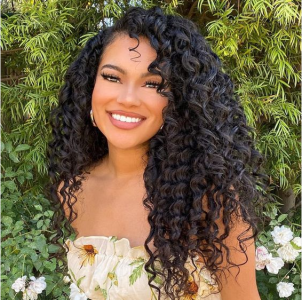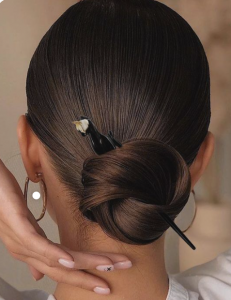Wigs offer the opportunity to experiment with different hairstyles, colors, and textures without committing to a permanent change. They’ve become an essential accessory for not only those experiencing hair loss but also for individuals who simply want to switch up their look.
Two popular options for wig enthusiasts are frontal wigs and closure wigs. These wigs are known for their natural appearance and the ability to create stunning hairstyles, but they differ in their construction and application. In this comprehensive guide, we will delve into the details of frontal and closure wigs, exploring their distinctions, advantages, and when to choose one over the other.
Understanding Wigs: A Brief Overview.
Before we delve into the differences between frontal and closure wigs, it’s essential to understand the basics of wigs themselves. Wigs are artificial hairpieces that are designed to be worn on the head to mimic natural hair. They come in a variety of styles, lengths, colors, and textures, making them a versatile accessory for individuals seeking a new look or those dealing with hair loss.
There are three primary types of wigs: full lace wigs, lace front wigs, and traditional wigs. Frontal and closure wigs are subcategories of full lace and lace front wigs, and they differ mainly in the coverage area and application method.
The Frontal Wig.
A frontal wig is a type of lace wig that features a lace piece that covers the entire front hairline, from ear to ear. This lace piece is commonly referred to as the “frontal.” Frontals are meticulously crafted, with each hair strand individually hand-tied to the lace base. This labor-intensive process creates a highly realistic appearance that mimics the look of a natural hairline.
Key Features of a Frontal Wig.
Lace Frontal: The most distinguishing feature of a frontal wig is the lace frontal. This lace piece allows for a realistic, natural hairline that blends seamlessly with your own hair or scalp.
Versatility: Frontal wigs offer an incredible degree of versatility. You can part your hair in various ways, including a middle part, side part, or no part at all, creating endless styling possibilities.
Realistic Look: The individually hand-tied hair strands on the lace frontal make it nearly impossible to detect that you’re wearing a wig. This is a significant advantage for those who want their wig to appear as natural as possible.
High Maintenance: While the result is undeniably stunning, frontal wigs require a fair amount of maintenance. The lace frontal is delicate, and improper care can lead to damage. Regular cleaning and upkeep are necessary to maintain the wig’s appearance.
Cost: Frontal wigs tend to be more expensive than closure wigs due to the intricate hand-tying process and the quality of the lace used for the frontal.
The Closure Wig.
A closure wig is another type of lace wig, but it features a smaller lace piece that covers a specific section of the head, typically the top of the head. This lace piece is known as the “closure.” Similar to the frontal wig, the hair strands on the closure are also individually hand-tied to the lace base, creating a natural look.
Key Features of a Closure Wig.
Lace Closure: The primary feature of a closure wig is the lace closure, which covers a smaller area at the top of the head. Closures are available in various sizes, with 4×4 and 5×5 being the most common.
Lower Maintenance: Closure wigs are easier to maintain than frontal wigs because the lace closure is smaller and less prone to damage. This makes them a more suitable option for those who are new to wig wearing.
Affordability: Closure wigs are generally more budget-friendly than frontal wigs due to the reduced size of the lace closure and less intricate construction.
Limited Styling Options: While closure wigs offer a natural appearance, they provide fewer styling options than frontal wigs. Typically, closures only allow for a middle part or a defined part on one side.
Natural Look: Closures still deliver a realistic look, especially when installed correctly. However, their styling versatility is somewhat limited compared to frontal wigs.

Frontal vs. Closure Wig: Which One to Choose?
The choice between a frontal and a closure wig ultimately depends on your specific needs and preferences. Here are some factors to consider when deciding which type of wig is right for you:
1. Styling Options.
Frontal Wig: If you love experimenting with different hairstyles and parting options, a frontal wig is the way to go. Frontals offer unparalleled styling versatility, allowing you to achieve a wide range of looks, including updos and ponytails.
Closure Wig: If you prefer a more straightforward, everyday style and don’t plan to change your part often, a closure wig might be a more suitable choice. While closures still provide a natural appearance, they are less versatile when it comes to styling.
2. Maintenance.
Frontal Wig: Frontal wigs require more maintenance due to the larger lace piece and the intricate hand-tying process. You’ll need to be diligent about cleaning, securing, and protecting the lace frontal to keep it in pristine condition.
Closure Wig: Closure wigs are easier to maintain, making them a great option for beginners. The smaller lace closure is less prone to damage, which means less intensive maintenance is needed.
3. Budget.
Frontal Wig: Frontal wigs are often more expensive than closure wigs due to the larger lace piece and the meticulous hand-tying of hair strands. If you’re willing to invest in a higher-quality wig, a frontal may be the choice for you.
Closure Wig: Closure wigs are generally more affordable, making them a cost-effective option for those looking for a natural look without breaking the bank.
4. Hair Loss or Thinning.
Frontal Wig: If you’re dealing with significant hair loss or thinning around your hairline, a frontal wig can provide full coverage and conceal the problem effectively. The lace frontal creates a seamless transition between your natural hair and the wig.
Closure Wig: If your hair loss or thinning is concentrated at the top of your head, a closure wig can be an excellent choice. It covers a smaller area while still providing a natural look.
5. Comfort.
Frontal Wig: While frontal wigs are incredibly realistic, the larger lace frontal may feel slightly heavier on the forehead. Some individuals may find this less comfortable, especially during extended wear.
Closure Wig: Closure wigs tend to be lighter and may provide a more comfortable fit, as they only cover a smaller portion of the head.
6. Skill Level.
Frontal Wig: Frontal wigs are better suited for experienced wig wearers who are comfortable with the more extensive maintenance and styling options they offer.
Closure Wig: Closure wigs are an excellent choice for beginners in the world of wigs. They are easier to install and maintain, making them a user-friendly option.
The Difference Between Them.
Frontal Wig:
Coverage: Frontal wigs feature a larger lace piece called a “lace frontal” that covers the entire front hairline from ear to ear.
Styling Versatility: Frontal wigs offer extensive styling options, including various parting styles, updos, and ponytails, due to the larger coverage area.
Maintenance: They require more maintenance as the lace frontal is larger and more delicate, necessitating regular cleaning and securing.
Cost: Frontal wigs are often more expensive due to the larger lace piece and intricate hand-tying process.
Comfort: Some individuals may find them slightly heavier on the forehead, which can affect comfort during extended wear.
Closure Wig:
Coverage: Closure wigs feature a smaller lace piece called a “lace closure” that covers a specific area at the top of the head (commonly 4×4 or 5×5 inches).
Styling Versatility: Closures provide fewer styling options compared to frontals, typically allowing for a middle part or a defined part on one side.
Maintenance: They are easier to maintain as the lace closure is smaller and less prone to damage, making them suitable for beginners.
Cost: Closure wigs are generally more budget-friendly due to the smaller lace closure and less intricate construction.
Comfort: Closure wigs are often lighter and may provide a more comfortable fit, as they only cover a smaller portion of the head.
Conclusion.
Frontal wigs and closure wigs both offer the opportunity to achieve a natural and stylish look without the commitment of permanent changes to your hair. The key differences lie in the size and coverage of the lace piece and the resulting styling options, maintenance requirements, and budget considerations.
In the end, the choice between a frontal wig and a closure wig is a matter of personal preference and individual needs. Consider your styling goals, maintenance capabilities, budget, and comfort when deciding which type of wig aligns best with your lifestyle. Both options can help you achieve the stunning look you desire, whether you’re looking to make a bold fashion statement or seeking a solution for hair loss or thinning.
















